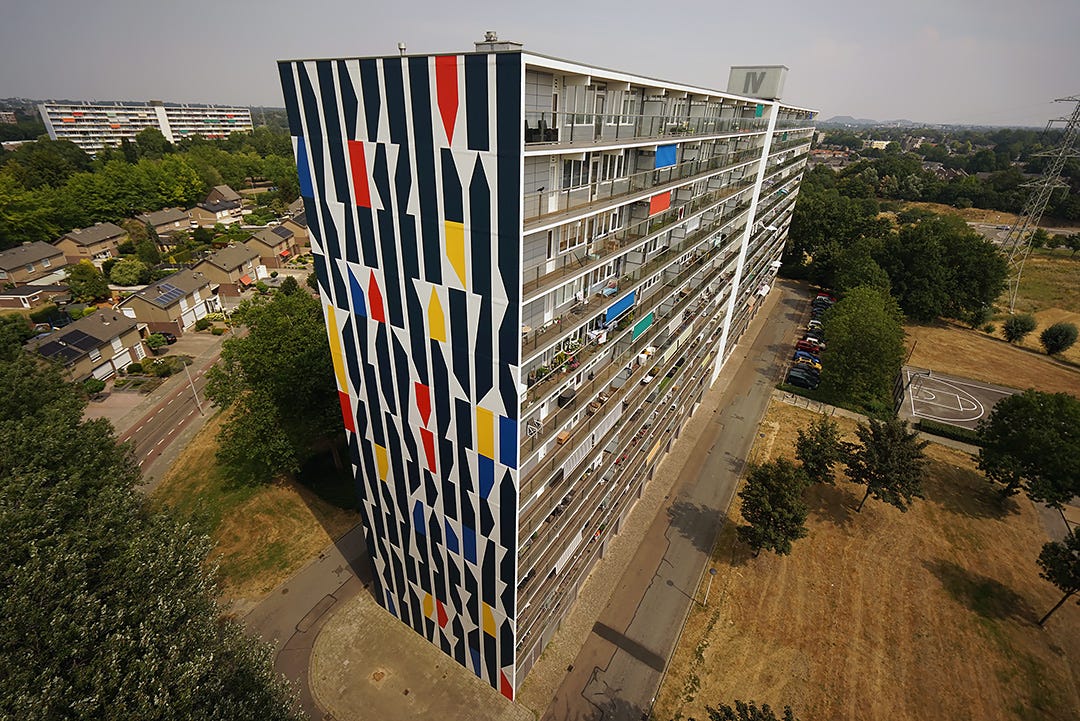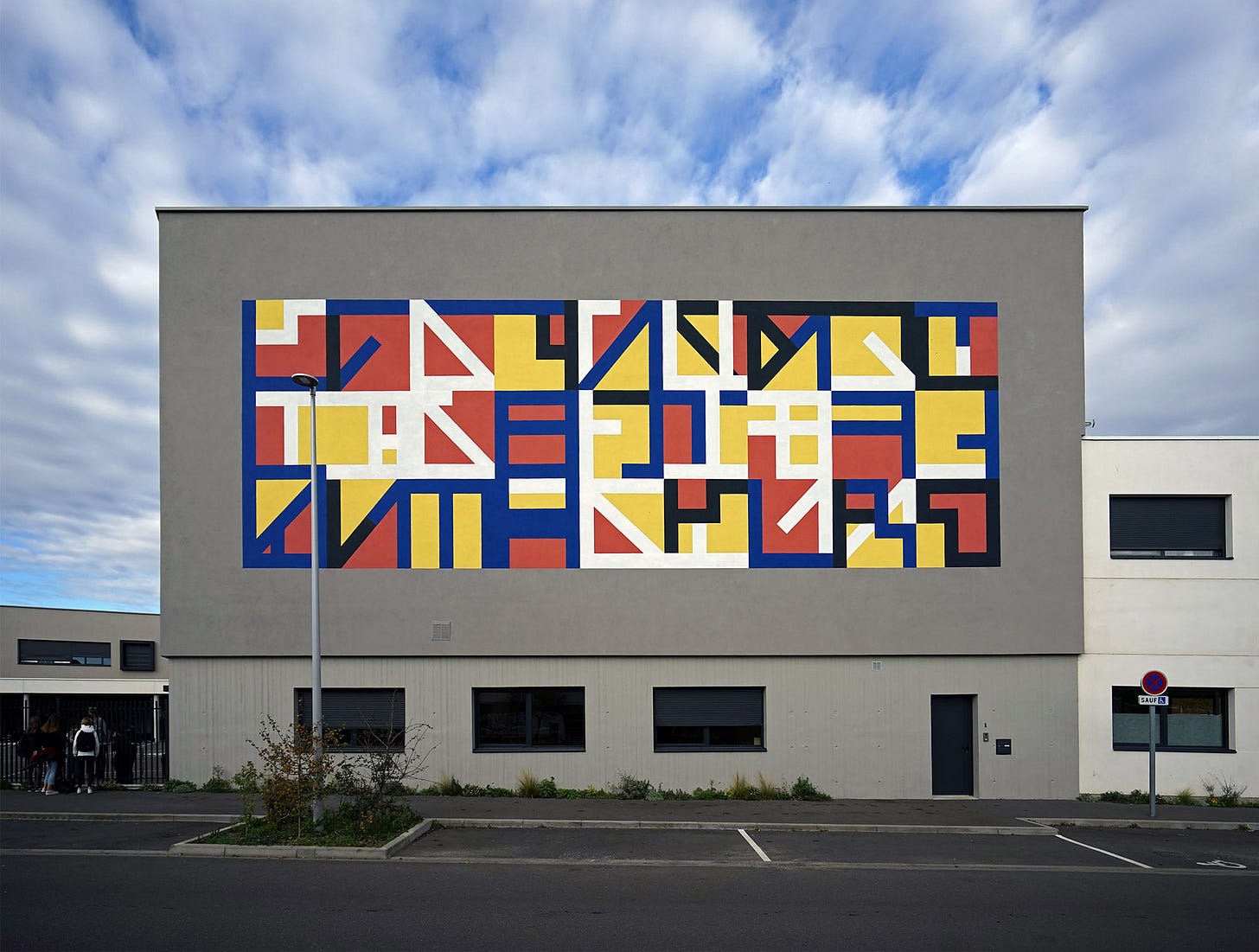I discovered generative art after entering the NFT space in early 2020, and one of the first artists to catch my eye was, the man, the myth, the legend, Eltono. His ADD collection, more specifically, was so interesting because he was generating them from code and a plotter system. First time learning about Plotter, so naturally my mind was completely blown. This is when I realized I had no clue what was going on.
Eltono is most known for creating amazing public spaces and graffiti art around the world. The way he is able to transform an ‘ignored’ neighborhood into a work of art that people want to visit and admire, is simply amazing. In 2022, he is one of the top generative artists tying both of these styles into NFTs. I was fortunate enough to ask Eltono some questions I’ve had on my mind about his early life, art blocks, and his perspective on the NFT space. I hope this interview gives you more insight into the person behind the artist.
Do you remember the first piece of art or artist that really caught your attention and even possibly influenced you to start creating yourself?
I think it’s the graffiti pieces I was seeing from my commuter train between my neighborhood and Paris. I was amazed by these names repeating over and over on each wall.
What kind of art were you making as a kid and teenager?
My mum had a bookshop and I spent my early years looking at (and later reading) Bandes dessinées. I drew a lot of quite elaborate comic books with a lot of explosions and destruction, that was my way of ending a story, making everything explode and write “The end” below it! I got into graffiti at 12 and at 19, graffiti got me into art university.
How did you first get involved with graffiti and street art in general?
After 10 years of active graffiti on my train lines, I went to art university and I started thinking about new ways of expression within the street. Street art like we know it today didn’t exist at that time. Slowly, my practice evolved and when I moved from Paris to Madrid, in 1999, I started painting furtive abstract shapes in the street.
How did you get into Furtive painting?
In early 2000, I realized I didn’t want to write my name over and over again and I looked for new ways to mark the street.
Are there any places in particular, that you will visit regularly to get inspiration from?
I never went anywhere that I didn’t find inspiring. I find interest in local details and tiny differences everywhere I go. I painted in more than 100 cities around the world and probably the most inspiring places I’ve been so far are Mexico, Peru and China. I traveled and painted in a lot of countries but one continent I’m missing is Africa. I hope to be able to go very soon. I'm working on it!
What do you find most challenging about creating art on physical objects or buildings?
The challenge when you are in front of a building is the scale and how to play with the architecture. I don’t really feel that much of a challenge, it’s more an exciting feeling for me. I also feel some responsibility. Painting in the public space is not like painting in your studio, a lot of things are happening around your artwork and you have to take them into account to best integrate the art within its surroundings. Architecture and residents are for me the two key things to work with when working in the public space.
How do you find buildings and objects to create art on? Or do they find you?
I’m lucky enough to not have to look for walls, people contact me to paint!
If and when you’re not creating, what are the things you love most to do in your “free time”?
Walking, always walking. Anywhere, in cities, in the countryside, I need to walk. I read too, but I rarely read about topics related to my work. I read about ethology, astrophysics and science in general.
So how did your interest in generative art come about?
It all started with big mural paintings. I am often given a building and freedom to paint whatever I want on it. It’s very exciting to me when the building has an interesting architecture, some details that I can play with and build my composition around. I did a lot of these murals and it was a lot of fun with complicated buildings but I couldn’t find inspiration when I was offered to paint a big flat rectangle wall. There were no elements to play with, no obstacles. In short, there was no spark for me to start my composition process. That’s when I decided to let chance decide for me on these flat bland walls. Chance brought back the excitement! Now I had a way to tackle these walls.
I own a few pieces from some of your NFT collections like ModBuildGen, 12 Points, and my favorite ADD Generative Drawings. What has been the most fun for you creating all of your NFT collections and being a part of the NFT community?
The whole 2021 year was a blast! I was entering something totally new for me and ended up having a few very successful collections. I remember how excited I was when I sold 10 NFTs in a row in mid January! The best part of it all was the experimentation: playing with code (12 Points), with IRL/digital friction (Stylus and Toolpath), linking NFTs to an IRL generative wall painting (Modo 46)… That’s where I have the most fun and I’m always working on new experiments.
Can you talk a little bit about the inspiration behind your Art Blocks releases ‘Andradite’ and ‘Swing’?
When I discovered Art Blocks in January 2021 I realized they were doing what I always wanted to do with generative art: sell the artwork to the collector first and then generate it. I always thought this was the best way to truly take part in and enjoy generative art. I’ve been exhibiting my work in galleries since 2001 and started making generative wall paintings in 2010. Since then I always wanted to implement that “collect first/reveal after” dynamic in my work but I found it difficult to get the collectors involved.
When I saw that Art Blocks and the blockchain technology made it work properly and had collectors fully involved in the process, I was amazed. You cannot imagine how happy I was when my application got accepted! Andradite comes from my wall painting protocol called Modo n.°7, I was playing with it with processing and after a few adjustments in the protocol’s parameters it started generating shapes that looked like graffiti letters made of rock (this is my own personal interpretation). I loved the outputs and I decided to make a collection out of it. Swing is based on Modo n.°6, a wall painting protocol with a set of shapes that are randomly placed on a grid. For Swing, the shapes are reduced to one line to generate both bold and elegant compositions.
You’ve used several generative styles to create your collections like Aleatory Mechanical/Digital Drawings. Is there a type of style you haven’t tried that you’d like to experiment with?
Like my paintings in the public space, I like bold graphics. I use code to test my protocols and expand the possibilities but I always experiment around the idea of signs, abstract symbols that spark a will of communication, where people instinctively try to read/interpret/decipher them. That’s the reason why I’m an abstract artist, I like to leave the door open to free interpretation.
Who are some generative artists that you’re recently inspired by?
For me, it has always been Sol Lewitt.
What is something you hope to accomplish in 2022?
I wish to experiment more, play with IRL/digital friction and get the collectors involved in the process.
I absolutely look forward to being a part of any process that involves you, Eltono!











